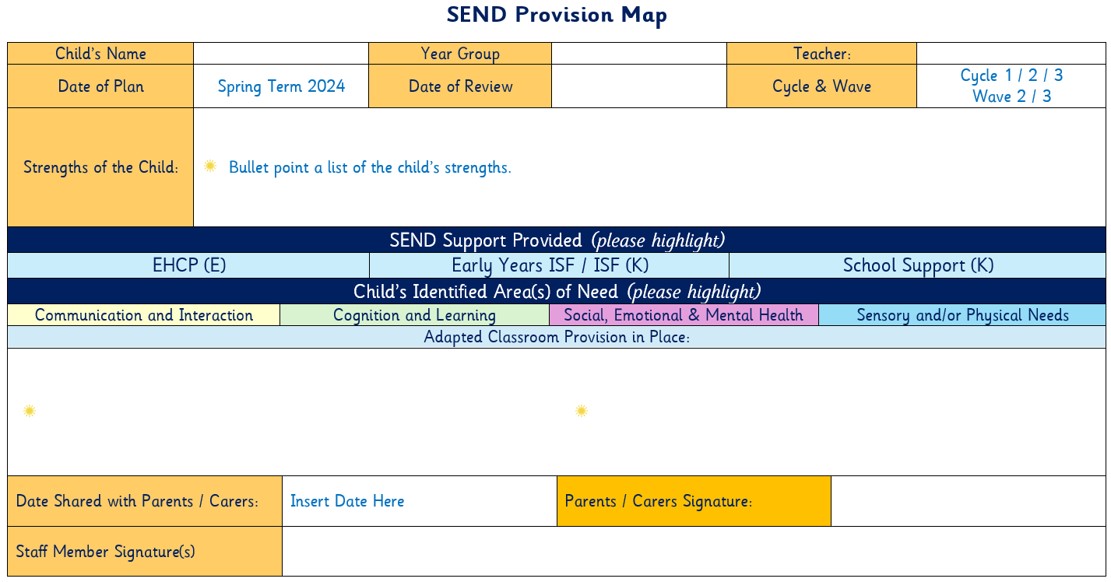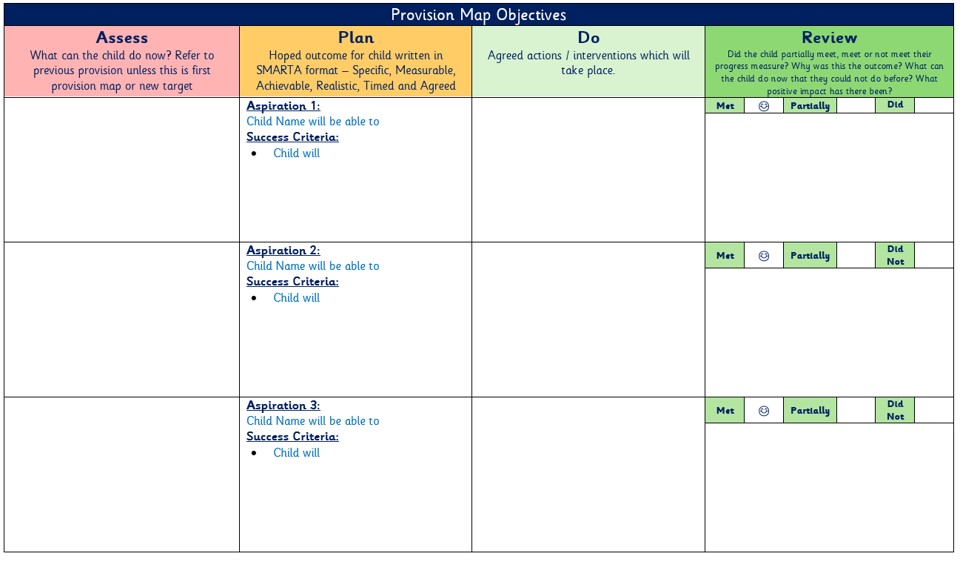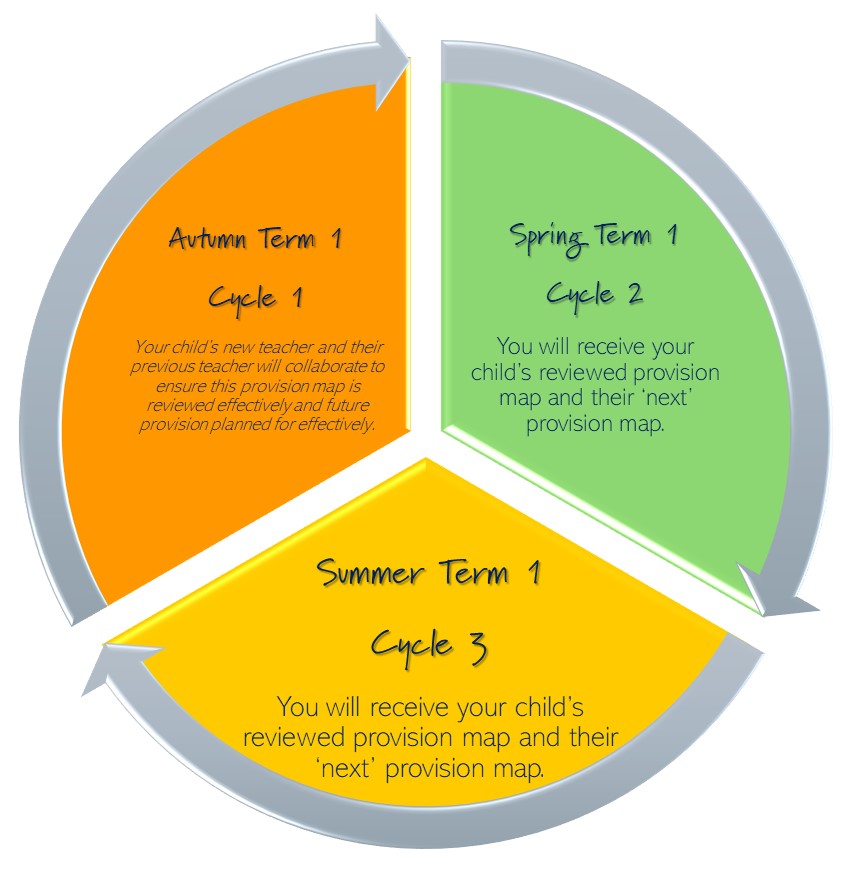SEND Provision Maps
Provision maps at Meadows Primary School and Nursery identify and outline the specific support and interventions required for individual SEND children. Their main purpose is to ensure that SEND children have tailored educational programs to meet their individual needs.
By detailing learning goals, strategies, and resources, provision maps help teachers and staff provide appropriate assistance, ultimately enabling children to aspire, grow, and flourish academically and personally. These maps foster a supportive learning environment, promoting inclusivity and equal opportunities for all children.
What does a provision map look like?
Our Provision Maps offer a clear and friendly format.
These are designed for teachers to:
- Be easy to use.
- Streamline a child’s targets to no more than three.
- Promote consideration of adaptations in place.
- Ensure all adults around the child understand the targets.
- Ensure the child has ownership of these (as appropriate to their age and stage).
A good SEND Provision Map at Meadows includes:
- Clear, SMARTA targets: Specific, Measurable, Achievable, Relevant, Time-bound, Agreed goals
- Holistic understanding: Comprehensive assessment of the whole child’s needs
- High-quality teaching: Inclusive strategies integrated into everyday teaching.
- Targeted interventions: Evidence-based small-group or one-to-one support.
- Regular review and updates: Continuous monitoring and adjustment of plans


How often will my child's provision map be reviewed?
Our SEND Provision Maps are formed around a developmental, cyclical process of 'assess, plan, do and review'. Some provision maps may be reviewed more than three times within a calendar year, but in general three times is appropriate.

Who will contribute to my child's provision map?
-
Teachers and Teaching Assistants: Provide daily classroom support, implement tailored strategies, and monitor progress.
-
Special Educational Needs and Disabilities Coordinators (SENDCOs): Develop and oversee the provision map, liaise with staff and parents, and ensure the child's needs are met.
-
Educational Psychologists: Assess children's learning and emotional needs, and recommend interventions.
-
Speech and Language Therapists: Address communication and language challenges through tailored therapies.
-
Occupational Therapists: Help children develop the skills necessary for daily activities and school participation.
-
Counsellors and Mental Health Practitioners: Provide emotional and psychological support to address mental health concerns.
-
Medical Professionals: Offer insights into the child's medical conditions and how they affect learning.
-
Social Workers: Support the child's social and emotional development, and work with families to provide a stable environment.
-
External Specialists: Including autism specialists, behavioural therapists, and other experts who offer targeted interventions and support.
By collaborating, these professionals ensure that the provision map is holistic, addressing all aspects of the child's development and learning needs.
How can I help support my child's provision map?
Supporting your child's SEND provision map can make a significant difference to their educational journey. Here are some tips for parents:
-
Stay Informed: Understand the goals, interventions, and strategies in your child's provision map. Regularly review updates or progress reports.
-
Communicate: Maintain open communication with your child's teachers, SENDCo, and other professionals. Discuss any concerns or observations.
-
Create a Supportive Environment: Reinforce school strategies at home. Establish routines and provide a quiet, distraction-free space for learning.
-
Stay Positive and Patient: Support your child's efforts and celebrate their achievements, however small. Patience and positivity build confidence.
-
Encourage Independence: Help your child develop self-advocacy and problem-solving skills. Encourage them to express their needs and take an active role in their learning.
-
Access Resources: Use available resources, such as educational websites, apps, and community support groups, to provide extra learning opportunities.
-
Monitor Progress: Track your child's progress and any struggles. Share this information with their educational team to make adjustments.
-
Attend Meetings: Participate in review meetings and parent-teacher conferences to stay updated on your child's development and contribute to discussions.
Engaging with your child's provision map can help create a supportive and nurturing environment that allows your child to thrive both academically and personally.


